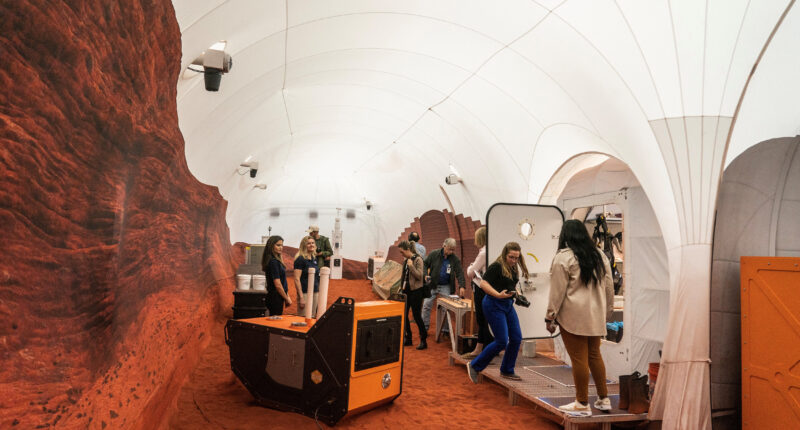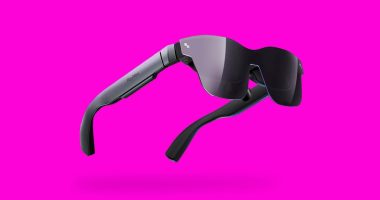THE astronauts destined for Mars will need time to psychologically adjust to being 145million miles away from Earth.
Nasa researchers also need to prepare for how being so far from home, locked on a planet with a handful of colleagues, impacts the human psyche.
A Mars-simulation habitat tucked away in a corner of Nasa’s Johnson Space Centre is designed to do exactly that.
Based in the arid landscape of Houston, Texas, four Nasa astronauts are set to spend an entire year inside a 1,700 square-foot facility.
It forms part of a plan to learn the impact that a year in isolation with limited resources has on human health.
The faux-off-planet home features four small rooms, two bathrooms, a gym and a relaxation area with sofas.


The US space agency has tried to build a facility that is as close to Mars as you can get on Earth.
This includes about 1,200 square feet worth of red sand that lies inside an inflatable bubble behind a fake airlock, which astronauts will need to suit-up for and explore in twos – mirroring their procedure for Mars.
“This is really an extreme circumstance,” said Dr Suzanne Bell, who leads the Behavioural Health and Performance Laboratory at the Nasa Johnson Space Centre.
“You’re asking for individuals to live and work together for over a one-year period.
Most read in Tech
“Not only will they have to get along well, but they’ll also have to perform well together.”
Nasa will throw manufactured stressors into the experience too, like resource limitation where crew members will have to agree on allocation of food for example, or equipment failure.
Even their rubbish will be analysed by Nasa scientists to figure out how products can be reused in space.
There will also be a 22-minute communication delay between the inhabitants and the outside world, just like astronauts will experience when communicating with Earth.
The likes of Elon Musk, the founder of SpaceX, have ambitions to one day erect entire cities on the Red Planet.
But first, the eccentric billionaire plans on having boots on Martian soil within the next 10 years.
To do get there, humans will first have to learn to live with a multitude of unique challenges.
This includes but is not limited to, high radiation levels, extreme temperature fluctuations and a year that lasts 678 days.
While the year inside the Mars-simulation will be just 365-days-long, the four astronauts will have their psyche’s tested for the good of the Mars mission.
The first mission to the planet is about a nine-month journey one-way, and astronauts could reportedly be left on the surface for two and a half years before starting the trip back home.
These early pioneers for life on the Red Planet will have to use a vertical farm to grow plants and foods inside the 3D-printed set-up.
Nasa hasn’t identified the four test subjects who are expected to call the enclosure home until June.
But they were selected using a similar criteria to the astronaut corps, and all hold advanced degrees in science, technology, engineering and maths.
The participants will be allowed to leave the experiment whenever they want, and two back-up astronauts have been selected to step in just in case.
It’s unclear whether they will be the astronauts actually heading to Mars, but they will be key to the success of the feat.
“No matter how challenging or large or expensive something like this is, it’s easier than doing it in spaceflight,” said Scott Smith, who leads the Nutritional Biochemistry Laboratory at Nasa Johnson Space Centre.
“So when we want to look at bone loss and muscle loss, we put people to bed. When we want to look at vitamin D and people that don’t see the sun, we go to Antarctica.


“When we look at oxidative stress, we go to the bottom of the ocean.
“And when we want to look at closed environments and stress, we build chambers like this.”
Best Phone and Gadget tips and hacks

Looking for tips and hacks for your phone? Want to find those secret features within social media apps? We have you covered…
We pay for your stories! Do you have a story for The Sun Online Tech & Science team? Email us at [email protected]
This post first appeared on Thesun.co.uk




















